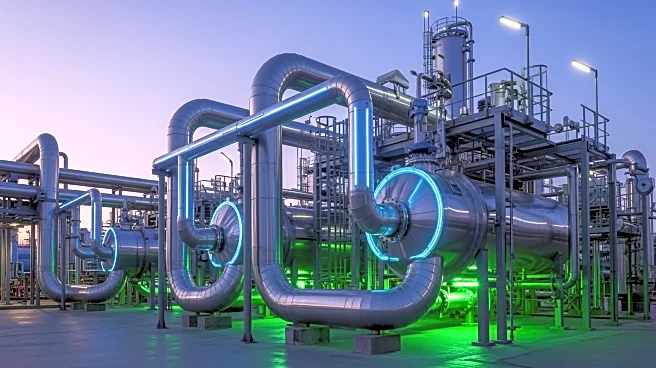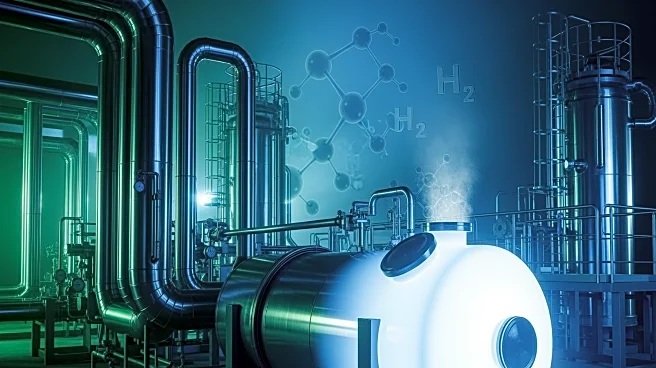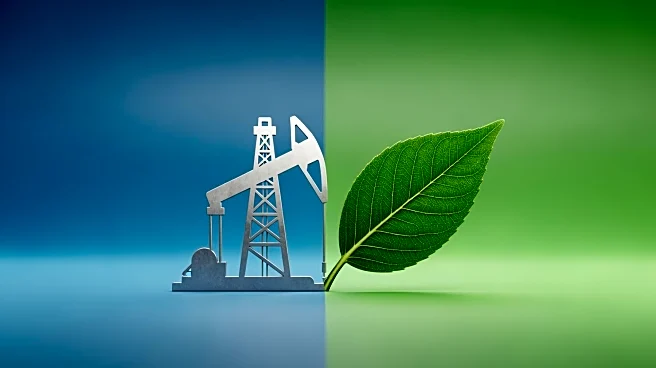What's Happening?
Air Liquide has successfully started the world's first industrial-scale ammonia cracking pilot unit at the Port of Antwerp-Bruges, Belgium. This unit has a capacity to convert 30 tons of ammonia into hydrogen per day, marking a significant advancement
in hydrogen transportation technology. The innovation addresses the challenge of efficiently transporting hydrogen over long distances by using ammonia as a carrier. Ammonia, which can be produced in regions rich in renewable energy, can be transported globally and then converted back into hydrogen, facilitating the decarbonization of industries and mobility. The project showcases Air Liquide's ability to scale up technologies from laboratory research to industrial applications, contributing to the energy transition.
Why It's Important?
The development of industrial-scale ammonia-to-hydrogen conversion technology is crucial for advancing the global hydrogen economy. Hydrogen is a key component in reducing carbon emissions and transitioning to renewable energy sources. By enabling efficient transportation of hydrogen, this technology supports the decarbonization of various industries, including transportation and manufacturing. Air Liquide's innovation could lead to increased adoption of hydrogen as a clean energy source, potentially reducing reliance on fossil fuels and lowering greenhouse gas emissions. This advancement also positions Air Liquide as a leader in the hydrogen sector, potentially influencing industry standards and practices.
What's Next?
Air Liquide's successful pilot unit may pave the way for the development of more large-scale ammonia cracking plants worldwide. As the technology proves viable, it could lead to increased investment in hydrogen infrastructure and further innovations in hydrogen transportation and storage. Stakeholders, including governments and energy companies, may explore partnerships and collaborations to expand the use of this technology. Additionally, regulatory frameworks may evolve to support the growth of hydrogen as a key energy source, influencing policy decisions and industry strategies.
Beyond the Headlines
The introduction of ammonia-to-hydrogen conversion technology raises ethical and environmental considerations. While it supports decarbonization, the production and transportation of ammonia must be managed to minimize environmental impact. The technology also highlights the need for international cooperation in developing sustainable energy solutions. As hydrogen becomes more accessible, it could drive cultural shifts towards cleaner energy consumption and influence public perceptions of renewable energy.














